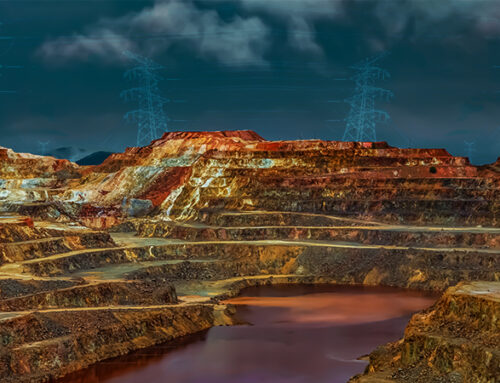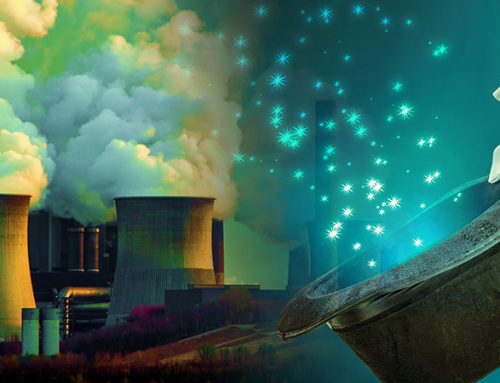I have bemoaned in previous posts the dependence of de-carbonisation goals on carbon capture and storage (“CCS”), a process that has yet to demonstrate commercial viability, other than in the context of enhanced oil recovery, which is hardly supportive of long-term emissions targets. I recently read a description of CCS that sums this up very well:
“Imagine that you’re sweeping your kitchen floor, and there’s a rug in the centre of the room. When you have a collection of dust, you lift up the corner of the rug and sweep it under. That, in essence, is carbon capture and storage. Just replace ‘dust’ with ‘carbon dioxide’, and ‘rug’ with ‘hole in the ground’.”
Since I wrote my original post on the subject in July 2016, little has changed. A report into the progress of CCS over the past 20 years, published in November 2016 by the International Energy Agency noted:
“…early CCS deployment proved to be more complex, expensive and politically challenging than anticipated. Of the US$ 30 billion in public funding announcements, only around US$ 2.8 billion was actually invested in large-scale CCS projects between 2007 and 2014,”
– IEA
There have also been high profile failures including the Kemper County CCS plant with coal gasification which cost over US$7.5 billion to build and was described as the most expensive power plant in history. In the end, the plant was ordered to cease operations by the Mississippi State public regulator, following years of delays and cost overruns. The Boundary Dam project in Canada, while technically not a failure, is arguably an economic one – the project cost nearly C$1.5 billion, and it produces about 115 MW, generating electricity at a cost of C$140 /MWh compared with C$60-70 /MWh for a CCGT.
However the optimism has continued with articles such as this one in The Chemical Engineer describe different projects and initiatives – in this case in Norway, where the government has set up a state agency to lead on CCS projects, however they are all still in the pilot phase. Despite this, the author is confident CCS is just around the corner:
“It really does look like Norway might just have cracked it and its looking pretty hopeful to me.”
However she also says:
“As we were repeatedly told on the safari, the technology for CCS is proven, what is necessary is to make the business case for CCS, put policies in place and to get the infrastructure in place.”
In other words, there is actually a long way to go…proving a technology in conceptual terms does not equate to proving a commercially viable technology.
Re-cap: what is CCS?
CCS consists of three parts: capture, transportation and storage, where the capture process generally takes one of three approaches: pre-combustion capture by converting the initial fuel into a mixture of hydrogen and carbon dioxide through a gasification process; post-combustion capture by absorbing carbon dioxide from the exhaust gases of a consumption process in a suitable solvent; or oxyfuel combustion where the combustion process uses oxygen diluted with recycled flue-gas, rather than air resulting in final flue-gases consisting mainly of CO2 and water.
The carbon dioxide is then transported by pipeline or ship and permanently stored in deep underground rock formations.
The capture processes themselves are challenging due to the energy required, and then further costs are added by the transportation and storage phases. Storage also presents technical challenges due to the requirement to avoid any leakage that would see the carbon dioxide return to the atmosphere.
Should we change our focus to CCU instead?
CCU is carbon capture and utilisation, in other words, rather than trying to find cast-iron means of storing CO2 forever with zero leakage, a better approach might be to find commercial uses for the captured gas. This is exactly what most of the commercial CCS projects to date have done in using the waste CO2 for enhanced oil recovery.
Assuming that increased oil production is inconsistent with a de-carbonisation agenda, are there any other uses for carbon dioxide? There are already a number of industrial applications for CO2 from fire extinguishers to wine-making, but new uses would need to be found for the vast quantities of carbon dioxide that could be produced through the de-carbonisation of the economy as a whole.
Australian firm Mineral Carbonation International is developing a technology that converts stored carbon into building materials. Mineral carbonation is an hour-long process that involves binding CO2 with crushed serpentinite, turning it into solid carbonates, mimicking, but rapidly accelerating the natural weathering by rainfall which produces common types of rock over millions of years. According to the company, these carbonates and silica by-products could potentially be used in building products such as concrete and plasterboard.
Another approach is to infuse wet concrete with carbon dioxide, a technique, known as “carbon curing,” where concrete is cured in a carbon dioxide–rich environment, causing the CO2 to react with water to form carbonate ions, which then react with calcium ions in the concrete to form solid calcium carbonates. This is a spontaneous exothermic reaction that releases rather than consumes energy, shortening the curing time. The process also increases concrete’s water resistance, and strengthens it, as well as providing a carbon sink.

Carbon dioxide can also be converted into fuel – technically any type of fuel or chemical that is otherwise derived from petroleum can also be produced from carbon dioxide, although the challenge is to do so in a way that is cost-competitive with oil. One method involves creating a chemical reaction between hydrogen and carbon monoxide to create the hydrocarbon chains that make up liquid fuels, known as “syngas”.
Scientists at the US Department of Energy’s Idaho National Laboratory (“INL”) have recently developed an efficient process for turning captured carbon dioxide into syngas. Traditional approaches for the production of syngas involve a reduction step that requires high temperatures and pressures, since at lower temperatures, the CO2 does not remain dissolved in water long enough to be useful. The process developed at INL addresses this challenge by using specialised liquid materials that make the CO2 more soluble and allow the carbon capture medium to be directly introduced into a cell for electrochemical conversion to syngas – by enabling the conversion to occur at low temperatures, the costs can be reduced making the entire process more economically viable.
If carbon capture is ever to be economically viable, it may well be through finding uses for the gas rather than trying to store it, however there is still a very long way to go before CCU schemes other than enhanced oil recovery come to market.
The Business, Energy and Industrial Strategy Committee appears to have woken up to the problem that all current pathways to achieving 2050 goals assume the deployment of large-scale CCS, and has launched an inquiry to “examine the Government’s commitment to deploying CCUS technology and whether it has a “Plan B” to meet the UK’s climate change targets should desired cost reductions not materialise.”
However, it’s difficult for any government to be genuinely committed to something that remains in the pilot phase at best. Of course some funding can be made available for research and test schemes, but the danger is that the Government gets sucked into picking technology winners, which is likely to be wasteful of public money. CCU may turn out to be at least a part of the answer, but it is far to early to say – time to start working on Plan B.







Leave A Comment